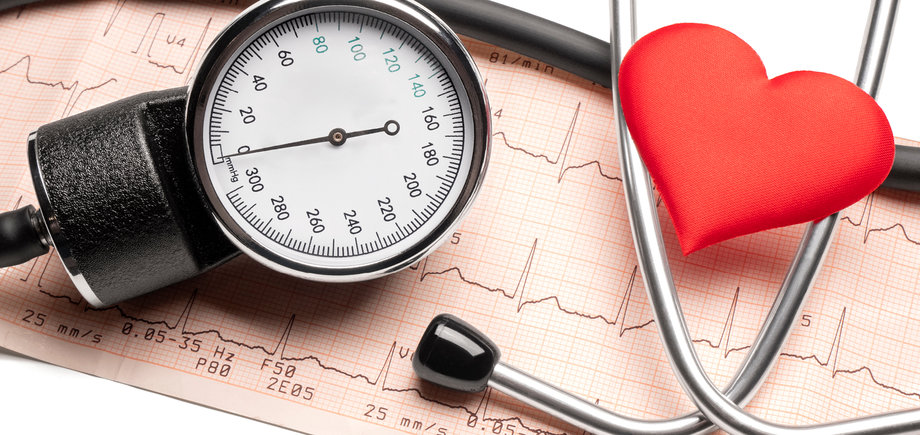What Is The Connection Between Hypertension And Diabetes?

Hypertension and diabetes are two prevalent chronic conditions that affect a significant portion of the global population. Understanding the connection between these two diseases is crucial for effective management and prevention strategies.
This article aims to provide an overview of the relationship between hypertension and diabetes by exploring shared risk factors, physiological connections, and the impact on cardiovascular health. Additionally, the article will discuss management strategies, the importance of early detection and prevention, and the need for a collaborative approach to treatment.
By examining the interplay between hypertension and diabetes, healthcare professionals and researchers can gain valuable insights into the underlying mechanisms and develop targeted interventions to improve patient outcomes.
This article adheres to an academic writing style, presenting objective and impersonal information to provide a comprehensive understanding of the connection between hypertension and diabetes.
Key Takeaways
- Hypertension and diabetes have a synergistic effect on cardiovascular health, leading to more severe cardiovascular pathologies.
- Comprehensive management strategies, including medication options and lifestyle modifications, are crucial for addressing the impact of hypertension and diabetes on cardiovascular health.
- Early detection and prevention of hypertension and diabetes minimize their impact on cardiovascular health.
- A collaborative approach to treatment, involving healthcare professionals from different disciplines and actively involving the patient in their care decisions, improves the quality of care and leads to better health outcomes and quality of life.
Overview of Hypertension and Diabetes
The relationship between hypertension and diabetes involves a complex interplay of pathophysiological mechanisms, making it a significant area of research and clinical interest.
Hypertension, commonly known as high blood pressure, and diabetes, a chronic metabolic disorder characterized by high blood sugar levels, often coexist and have a bidirectional relationship. Studies have shown that individuals with diabetes have a higher prevalence of hypertension compared to those without diabetes. The prevalence rates of hypertension are even higher among individuals with type 2 diabetes, reaching up to 60-80%.
This association is concerning as both conditions independently contribute to the development of long-term complications, including cardiovascular diseases, such as heart attacks and strokes. Furthermore, the presence of both conditions significantly increases the risk of these complications, leading to poorer outcomes and increased morbidity and mortality rates.
Therefore, understanding the connection between hypertension and diabetes and implementing appropriate management strategies is crucial in order to reduce the burden of these chronic conditions.
The Prevalence of Hypertension and Diabetes
Moreover, the prevalence rates of hypertension and diabetes have been steadily increasing, leading to a significant global burden.
Hypertension affects approximately 1.13 billion individuals worldwide, accounting for nearly 20% of the adult population.
Diabetes, on the other hand, affects around 463 million people globally, with a projected increase to 700 million by 2045.
The coexistence of hypertension and diabetes is common, with studies suggesting that up to 60% of individuals with diabetes also have hypertension.
This comorbidity is of particular concern as it poses a higher risk of cardiovascular complications, including heart disease and stroke.
Furthermore, the presence of both conditions can result in a synergistic effect, exacerbating each other’s negative impact on the body.
The increasing prevalence of hypertension and diabetes highlights the urgent need for effective prevention and management strategies to alleviate the global burden associated with these conditions.
This discussion will focus on the shared risk factors of obesity, sedentary lifestyle, and poor diet in relation to the prevalence of both hypertension and diabetes.
Obesity, characterized by excessive body fat accumulation, is a major risk factor for both conditions.
Sedentary lifestyle, involving low levels of physical activity, is also strongly associated with the development of hypertension and diabetes.
Additionally, poor diet, particularly high intake of processed foods, sugar, and unhealthy fats, is a common risk factor for both conditions.
Obesity
Obesity, a condition characterized by excessive body fat accumulation, is strongly associated with both hypertension and diabetes. The relationship between obesity and these two conditions is complex and involves various mechanisms.
1) Weight management: Obesity is a major risk factor for both hypertension and diabetes. Effective weight management strategies, such as adopting a healthy diet and engaging in regular physical activity, play a crucial role in preventing and managing these conditions.
2) Metabolic syndrome: Obesity is closely linked to metabolic syndrome, a cluster of conditions including high blood pressure, high blood sugar levels, abnormal cholesterol levels, and excess abdominal fat. Metabolic syndrome increases the risk of developing both hypertension and diabetes.
3) Insulin resistance: Obesity is known to cause insulin resistance, a condition where cells become less responsive to the effects of insulin. Insulin resistance is a key factor in the development of type 2 diabetes and is also associated with hypertension.
4) Inflammatory response: Obesity is associated with chronic low-grade inflammation, which contributes to the development of hypertension and diabetes. Fat cells release inflammatory molecules that promote insulin resistance and increase blood pressure.
In conclusion, obesity plays a significant role in the development and progression of both hypertension and diabetes. Addressing obesity through weight management strategies and lifestyle modifications is crucial in preventing and managing these conditions.
Sedentary Lifestyle
To delve into the risk factors associated with hypertension and diabetes, it is imperative to examine the impact of a sedentary lifestyle on the development of these conditions.
A sedentary lifestyle refers to a lack of physical activity and is characterized by prolonged periods of sitting or low levels of movement. Numerous studies have shown a strong association between sedentary behavior and an increased risk of hypertension and diabetes.
Engaging in regular physical activity helps to regulate blood pressure, improve insulin sensitivity, and maintain a healthy body weight, all of which are crucial in preventing the onset of these conditions.
Conversely, a sedentary lifestyle is associated with weight gain, obesity, and an increased likelihood of developing hypertension and diabetes. Therefore, it is essential to promote and encourage regular physical activity to combat the detrimental effects of a sedentary lifestyle on overall health.
Poor Diet
One key factor that significantly contributes to the development of hypertension and diabetes is an unhealthy diet. Unhealthy eating habits, characterized by the consumption of high-calorie, low-nutrient foods, play a crucial role in the onset and progression of these chronic diseases.
Individuals who follow poor dietary patterns, such as consuming excessive amounts of added sugars, saturated fats, and sodium, are at a higher risk of developing hypertension and diabetes. These unhealthy food choices can lead to weight gain, insulin resistance, and elevated blood pressure levels.
Moreover, the lack of nutrition education exacerbates the problem, as individuals may not be aware of the detrimental effects of their dietary choices. Addressing poor diet through comprehensive nutrition education programs is essential in promoting healthier eating habits and reducing the prevalence of hypertension and diabetes.
Physiological Connections
Furthermore, the pathophysiological mechanisms that link hypertension and diabetes involve intricate interplay among vascular dysfunction, insulin resistance, and chronic inflammation. These physiological mechanisms play a crucial role in the development of long term complications associated with both conditions.
Hypertension, characterized by elevated blood pressure, is commonly observed in individuals with diabetes. Insulin resistance, a hallmark of diabetes, leads to impaired glucose metabolism and causes endothelial dysfunction, resulting in increased arterial stiffness and hypertension.
Chronic inflammation, another common feature of diabetes, further contributes to endothelial dysfunction and vascular damage. The combination of these factors creates a vicious cycle, where hypertension exacerbates insulin resistance and vice versa.
This interplay between hypertension and diabetes not only increases the risk of cardiovascular events but also accelerates the progression of renal disease, retinopathy, and neuropathy. Understanding these physiological connections is essential for the management and prevention of long term complications in individuals with hypertension and diabetes.
Impact on Cardiovascular Health
The impact of hypertension and diabetes on cardiovascular health is significant, as the interplay between these conditions leads to increased arterial stiffness, vascular damage, and a higher risk of cardiovascular events. Hypertension, or high blood pressure, is a common comorbidity in individuals with diabetes. It accelerates the progression of cardiovascular complications and increases the risk of long-term effects. Diabetes, on the other hand, contributes to the development of atherosclerosis and endothelial dysfunction, further exacerbating the cardiovascular risk in hypertensive patients. The combination of hypertension and diabetes has a synergistic effect, resulting in more severe and complex cardiovascular pathologies.
To emphasize the importance of this interplay, a 2 column and 5 row table can be included to highlight the cardiovascular complications associated with hypertension and diabetes. This table can provide a clear visual representation of the increased risks and long-term effects, capturing the attention of the audience.
Management Strategies
To effectively address the impact of hypertension and diabetes on cardiovascular health, it is crucial to implement comprehensive management strategies that target both conditions simultaneously. These strategies should include a combination of medication options and lifestyle modifications.
- Medication options:
Pharmacological interventions play a significant role in managing both hypertension and diabetes. Antihypertensive medications such as angiotensin-converting enzyme inhibitors (ACE inhibitors) and diuretics are commonly prescribed to control high blood pressure. In addition, antihyperglycemic drugs such as metformin and insulin are used to regulate blood glucose levels in individuals with diabetes. - Lifestyle modifications:
Alongside medication, lifestyle modifications are essential for effective management. This includes adopting a healthy diet low in sodium and saturated fats, engaging in regular physical activity, maintaining a healthy weight, and quitting smoking. These lifestyle changes can help control blood pressure and blood sugar levels, thereby reducing the risk of cardiovascular complications.
Implementing these comprehensive management strategies that incorporate medication options and lifestyle modifications can provide individuals with hypertension and diabetes the best chance of improving their cardiovascular health outcomes.
Importance of Early Detection and Prevention
Early detection and prevention are crucial in minimizing the adverse impact of hypertension and diabetes on cardiovascular health. Early intervention plays a vital role in identifying individuals at risk, allowing for timely implementation of appropriate management strategies.
Recognizing the early signs and symptoms of hypertension and diabetes enables healthcare professionals to initiate treatment promptly, thereby preventing or delaying the progression of these conditions. Additionally, early detection allows for the implementation of lifestyle modifications, which have been shown to effectively reduce blood pressure and blood glucose levels.
Lifestyle modifications include adopting a healthy diet, engaging in regular physical activity, maintaining a healthy weight, and avoiding tobacco and excessive alcohol consumption. By promoting early detection and emphasizing the importance of lifestyle modifications, healthcare providers can significantly improve the long-term outcomes for individuals with hypertension and diabetes.
Collaborative Approach to Treatment
By implementing a collaborative approach to treatment, healthcare professionals can improve the overall quality of care for individuals with hypertension and diabetes, leading to better health outcomes and reduced morbidity and mortality rates.
A collaborative approach involves healthcare providers from different disciplines working together to develop and implement a comprehensive treatment plan that addresses the unique needs of each patient.
This approach emphasizes patient-centered care, which involves actively involving the patient in their own care decisions and tailoring treatment plans to their individual preferences and goals.
By incorporating input from various healthcare professionals, such as physicians, nurses, dietitians, and pharmacists, a more holistic and comprehensive approach to treatment can be achieved.
This can result in better management of blood pressure and blood sugar levels, improved medication adherence, and increased patient satisfaction.
Ultimately, a collaborative approach to treatment can help individuals with hypertension and diabetes achieve better health outcomes and improve their overall quality of life.
Frequently Asked Questions
What are the symptoms of hypertension and diabetes?
The symptoms of hypertension include high blood pressure, headaches, dizziness, and blurred vision. Symptoms of diabetes include frequent urination, increased thirst, unexplained weight loss, fatigue, and blurred vision. Managing hypertension and diabetes involves lifestyle changes such as regular exercise, a healthy diet, and medication.
Are there any specific age groups that are more at risk for developing both conditions?
The risk of developing both hypertension and diabetes varies among age groups. Older adults are more at risk for developing both conditions due to age-related changes in the body and increased prevalence of risk factors.
How does hypertension and diabetes affect kidney function?
The coexistence of hypertension and diabetes has a detrimental effect on kidney function, leading to an increased risk of developing chronic kidney disease. Implementing effective management strategies for both conditions is crucial to preserve cardiovascular health.
Can hypertension and diabetes be cured completely?
Hypertension and diabetes cannot be cured completely. However, they can be managed through treatment and prevention strategies. Lifestyle modifications, such as regular exercise, healthy diet, and medication, play crucial roles in managing hypertension and diabetes.
Is there a genetic component to developing hypertension and diabetes?
Genetic predisposition and hereditary factors play a significant role in the development of hypertension and diabetes. Research suggests that certain genes can increase the risk of developing these conditions, highlighting the importance of understanding the genetic component in their etiology.









